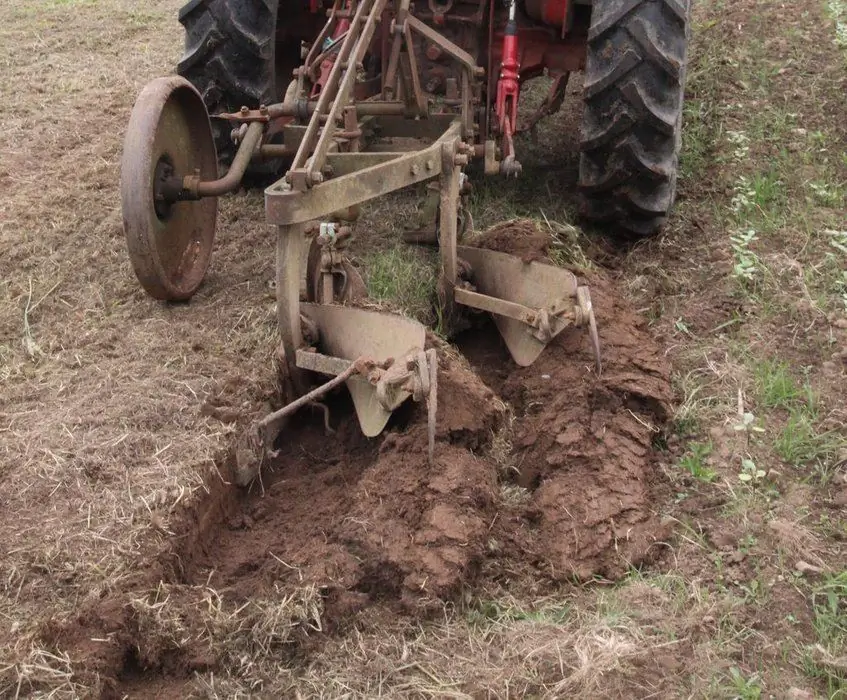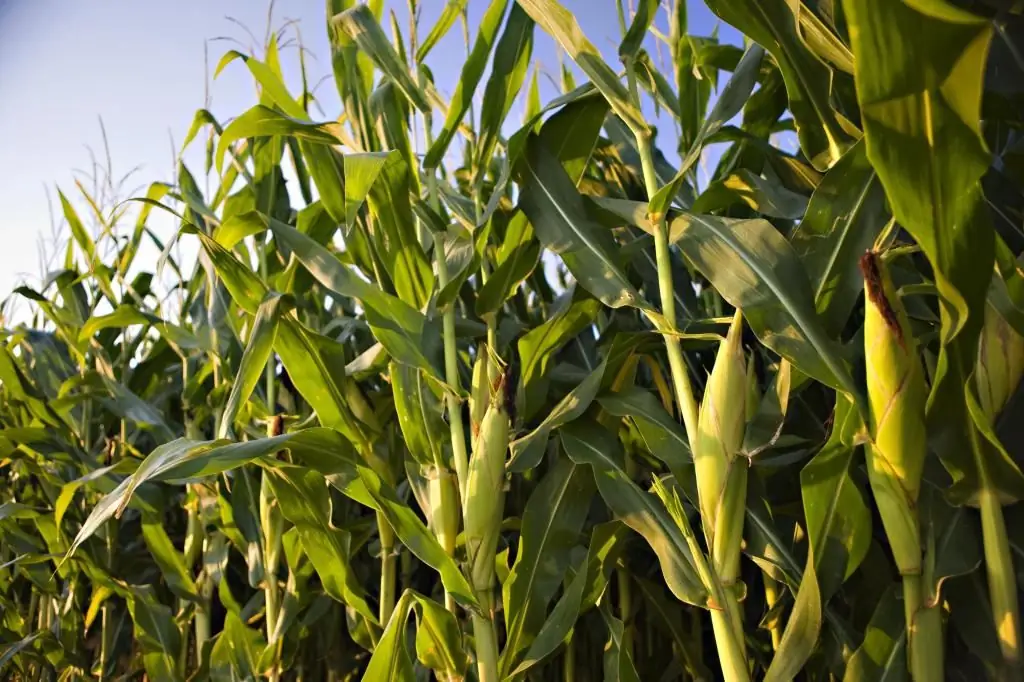2025 Author: Howard Calhoun | [email protected]. Last modified: 2025-06-01 07:12:56
Rice is one of the most valuable grain crops in the world, one of the main food products for the majority of the population of our planet. This is an annual plant, a family of cereals of the class monocots.
General information
This cereal has a fibrous root system, with air cavities that provide air access to the flooded soil. Rice is a bush consisting of knotty stems, the thickness of which is about 3-5 mm, and the height is from 38 cm, it can also be 3-5 m high (deep-water forms). The stems are mostly erect, but some are ascending and creeping. The leaf is lanceolate, the inflorescence is a panicle, the length of which is 10-30 cm. The panicle is compressed or spreading, drooping or erect, depending on the rice variety. On it is located a large number of single-flowered spikelets on short legs. A whole, ordinary grain of rice consists of a hard shell, under which there is a brownish grain. Under the skin is the endosperm, the most nutritious part of the grain, and it is this that we see in the form of white rice, called polished or polished. It contains about 94%starch, about 6-10% protein, but, unfortunately, it contains almost no B vitamins and minerals. Polished rice cooks faster and is easier for the body to digest. Product will keep longer in hot, humid climates.

Rice growing
There are 3 types of fields on which this cereal is grown: upland, checks and firth. In the fields of checks, rice cultivation technology consists in cultivation with constant flooding until the crop ripens, then the water is drained and the crop begins to be harvested. This type of harvesting is the most common, about 90% of the world's rice products are harvested this way. Dry fields are located in areas where there is a lot of rainfall, so they do not require artificial irrigation. On both fields, rice of the same varieties can be grown, but the yield on the check fields is higher. The firth rice field is mainly located in the floodplains and is cultivated during the flood period. In this case, rice of a special variety is used, with a fairly fast growing stem, the panicles of which float on the water. Compared to growing rice in other fields, this method gives a much smaller yield, but this way it is more traditional in those regions where cereal is the most important element of nutrition for the population, for example, in Asia.

Types of rice
There are thousands of different varieties of rice in the world. For example, in Asia, each field produces its own variety of this crop. It is classified according to the length of the grain, type of processing, color, aroma. Bydegree of processing, the cereal is divided into white rice, brown and steamed.
The following types of rice are distinguished:
- Paddy: Paddy, fresh from the field, can be stored for several years.
- Rice hulls - removing it from grain is the first stage of processing, used as animal feed and as fertilizer.
- Bran husk: derived from the grinding of grains, used in breakfast cereals and animal feed.
- Polished white rice: the most common. There are round-grain, medium-grain and long-grain rice, photos of which can be seen in the article.
- Parboiled Rice: Paddy rice is pre-soaked in water and then steamed under pressure.
- Brown or unpolished. There are medium-grain and long-grain rice, the price of which is not too different from the price of polished rice, but is considered much he althier than white rice.
- Broken Rice: Rice grains break during processing, large pieces are used for confectionery and breakfast, small pieces are used for rice flour.
- Jasmine, Basmati, Egyptian and wild rice are also common.

History and distribution
Rice has been consumed and cultivated for about 7,000 years. Photos testifying to this can be found in ancient manuscripts of China and India. Even then, in the rice fields, a system of canals was used to irrigate this crop. Where he appeared for the first time is not established, however, some scientists agree that his homeland is considered to beIndia. According to other sources, it is known that rice fields in China appeared as early as the 5th millennium BC and by about 500 BC were already located in Southeast and South Asia, China and India. Spreading, this grass has adapted to different weather conditions, for example, in South Asia they needed a lot of water and heat all year round, and in Japan, Korea and central China, varieties that tolerate cold and need little water have been adopted. In Asia, rice is still harvested and planted by hand, and has been cultivated for centuries on mountain plateaus, hillsides and small plots of land. In the 13th century, rice fields appeared in Sicily; in North America, he ended up along with the French, British and Japanese. Rice was brought to South America by the Portuguese and Spaniards. Rice cultivation in Russia began over 300 years ago.

Rice in Russia
In the Russian Empire, the first rice field appeared during the time of Ivan the Terrible. A decree was issued to the Astrakhan voivode to grow "Saracenic millet", which is what rice was then called. Fields were located in the lower reaches of the Volga, but the result of the experiment, unfortunately, remained unknown.
During the reign of Peter I, "Saratsin millet" again arose in Russia, it was sown in the delta of the Terek River, and the fate of the crop was again lost among urgent state needs. And only in 1786 rice reappeared on the territory of Russia - it was brought by the Kuban Cossacks. Rice fields are located in the floodplains of the Kuban River, and after a good harvest, rice fields appeared in Russia.
World rice consumption
There are 2 approaches to the consumption of this cereal: "Western" - typical for the countries of America and Europe, and "Eastern" - for Asian countries. In Eastern countries, rice is a daily food, in Europe, rice gained its fame later, and initially it belonged to exotic plants and was prepared exclusively for the festive menu. Over time, rice also became one of the main foods, but, unlike in Asia, in Europe, rice began to be cooked with poultry, meat, seafood and spices.

The need for rice crops
Each year, about 350 million tons of rice is produced on Earth. More than half of the people on the planet use it 3 times a day. And in Japan, 78% of peasant farms are focused on growing rice, for example, although the cost of rice is much higher here. The rate of consumption of this cereal per person in Asia is 150 kg per year, and in Europe - 2 kg per year. About 12-13 million tons is the annual volume of world imports and exports, that is, approximately 4% of the total crop on Earth. South America and Asia are the main exporters of rice, while Europe is the importer.
Rice sowing
For seed cleaning, special sorting-separators are used, then the seeds are checked for germination, with indicators of less than 90% of the grain are considered unsuitable. 5-8 days before sowing, the seeds are dried in the sun, soaked in warm water for 2-3 days, after swelling, dried to flowability and begin to sow in pre-heated soil up to 10see. The best way to sow rice is narrow-row disc seeders with flanges or ordinary row. The cross-diagonal method of sowing rice also brings good results. On flooded soils, broadcast seeding from an aircraft is used, so about 150 hectares can be sown per day using one aircraft. Rice can also be grown from seedlings. This method is used in Vietnam, China, Japan and other countries. Seedling culture in the CIS countries is found in Azerbaijan.

Irrigation and care of rice crops
There are 3 ways to irrigate rice crops:
- flooding is constant - water is on the field throughout the growing season;
- short flooding - no water layer at the beginning and end of the growing season;
- intermittent flooding - the water level is maintained for certain periods.
In the CIS countries, mainly shortened flooding is used. On soils that are not highly saline and relatively clean from weeds, watering is carried out after sowing and before germination. After germination, the rice field is flooded, and a not very large layer of water is left during tillering - about 5 cm. Then, gradually, the water layer is increased to 15 cm, and at this level the water is until the wax ripeness of the plants. Over time, the water supply is slightly reduced so that the land dries up by ripening, and it is possible to start harvesting. To kill algae, chemically control weeds or aerate the soil, dry the rice field. Photos of this procedure can be found in many recommendations forirrigation and care of rice.

Rice cultivation technologies
The All-Union Rice Research Institute has developed a rice cultivation technology, thanks to which it is possible to obtain from 4 to 6 tons of grain per 1 ha. The technology is designed taking into account the specifics of soils, climate, varieties.
For the southern regions and the Krasnodar Territory, 8 options for rice production technology have been developed:
- The basic technology, which includes 66 operations, is accompanied by high rice yield, high fuel consumption and high labor intensity.
- Technology in which seeds are sown to a depth of 4 or 5 cm, and includes 49 operations. Here, preliminary soil preparation is used: autumn planning and early plowing.
- Technology that combines tillage operations: leveling the microrelief, using mineral fertilizers and herbicides, sowing, rolling the surface.
- Technology that provides for minimum tillage: it does not include operations such as plowing, disking, chiselling, operational planning, replowing.
- Technology specialized in fields flooded with water, that is, where the rice field cannot be dried in spring and autumn, as well as during rainy times during sowing and soil preparation.
- Herbicide-free technology that uses agricultural practices to control weeds, diseases and pests.
- Pesticide-free technology for growing dietary rice.
- Technology where everythingenergy-intensive and labor-intensive technological processes are carried out by units KFS-3, 6 and KFG-3, 6 and a rotary plow PR-2, 4. A distinctive feature of the method is smooth plowing.
Recommended:
Corn silage: cultivation, harvesting and storage technology

Corn silage is a valuable feed that can form the basis of the diet of various animals and birds. However, its harvesting is a complex process that will be useful for many agricultural workers to understand
Khar'yaginskoye field. Oil field in the Nenets Autonomous Okrug

The Kharyaginskoye field is one of the main oil fields in the Nenets Autonomous Okrug. For several decades of its history, it has changed operators several times
Spring wheat: cultivation technology, features of sowing, cultivation and care

About 35% of all grain plantings on the planet today falls on wheat. In purchases, the share of such grain is 53%. Technologies for growing spring wheat in Russia can be used differently. But when cultivating this crop, crop rotation must be observed and careful preliminary preparation of the soil must be carried out
Corn: cultivation technology, features of planting, cultivation and care

Every one of our compatriots has seen and tasted corn. However, not everyone thinks about how important culture it is. Therefore, tell about it in more detail. We will also dwell briefly on the technology of corn cultivation - it will be very useful for novice farmers to learn about this
Proper cultivation of pumpkins in the open field

Successful cultivation of pumpkins in the open field depends on many components: proper soil preparation, high-quality seedlings, care, shaping depending on climatic conditions

